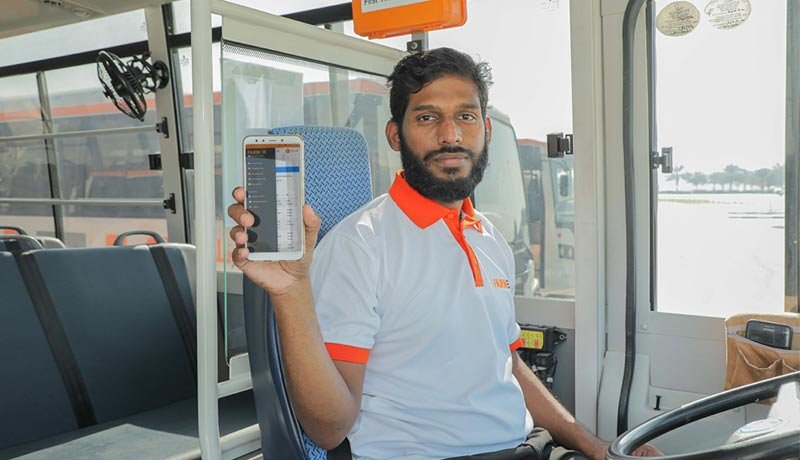21 December 2024, Sat |
7:01 PM

UAE-based smart and green facilities management (FM) company Farnek has launched an in-house smart fleet management solution that will not only optimise the performance of its transport fleet, but also improve service delivery to its customers.
The solution, which covers Farnek’s entire transport fleet of more than 300 buses, vans and cars across the UAE, was built by its in-house technology division, which after a lengthy process of research and development, has simply and ingeniously adopted and adapted the latest smart technology to produce a homemade solution.
“This bespoke telematics system has been developed in-house by our own IT engineers, using proven technology and is a Cloud and mobility-based platform. Our fleet is now powered by IoT telematic sensors connected with Google Maps for route optimisation with our drivers, fleet, service schedule and of course our customers, front of mind,” said Javeria Aijaz, Director Technology & Innovation, Farnek.
Using Farnek’s live administrative portal, operational staff at its logistics centre compare vehicle inventory with the current and scheduled demand and issue instructions to the drivers (each vehicle is fitted with a dedicated smart phone loaded with an app).
The drivers log in, accept the notification based on a QR code sent to the smart phone in the vehicle and start their journey. The app automatically calculates and compares the estimated and actual journey times and presents the driver with Google Maps-based navigation, to show the most time-efficient route to take.
“All vehicles are integrated with an IoT sensor that essentially tracks the vehicle and monitors ignition status, sends idling notifications and speeding alerts, all in real time, which all contribute positively towards our drivers’ performance,” commented Markus Oberlin, CEO, Farnek.
“Moreover, if for example we have two buses with a capacity of 30 seats each travelling to the same destination, if available, we can switch to one 60-seater bus. Furthermore, by downloading the app, customers can also track the vehicle themselves and at the end of their shifts, our own employees will be able to see where the bus is and how long they will have to wait,” commented Oberlin.
“Overall, this improves safety, saves fuel, cuts our CO2 emissions as well as reducing wear and tear on the vehicle, prolonging the operational life of our transport fleet,” added Oberlin.
The operational dashboard can also generate incident reports, organise new transport schedules, search for the nearest and most relevant available vehicle, corelating with customer demand.
A whole host of reports can also be generated by the system as well, from vehicle assignment and utilisation to monthly expense reports. There’s also a driver’s module holding driving documents and records of any previous incidents or violations.
“Through cross referencing, these reports can identify vehicles that are maybe not performing particularly well and could require some sort of repair or maintenance. Also, we can share fuel-efficiency figures with individual drivers, which will encourage them to drive more carefully and not to leave engines idling for long periods of time,” stated Aijaz.